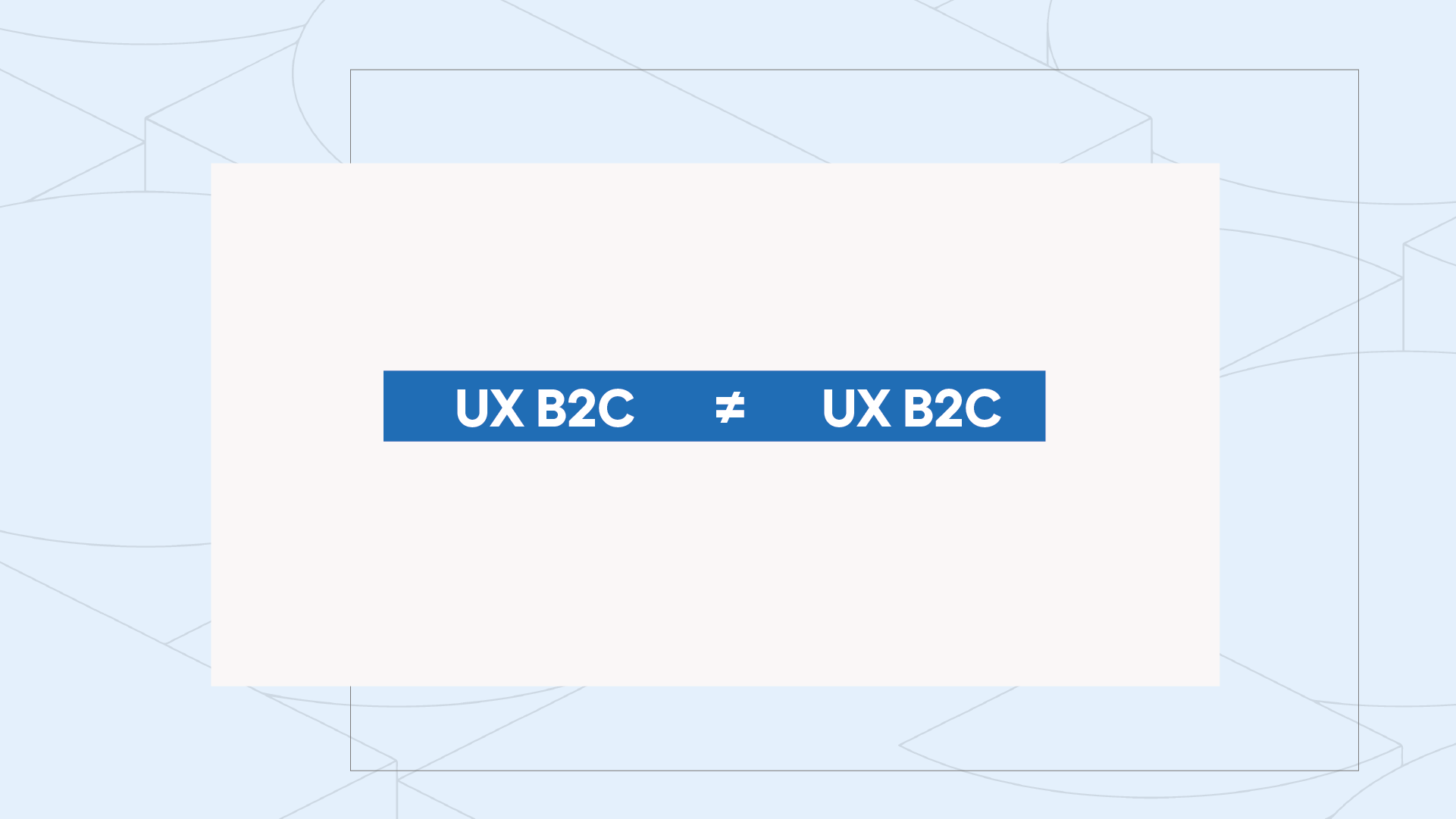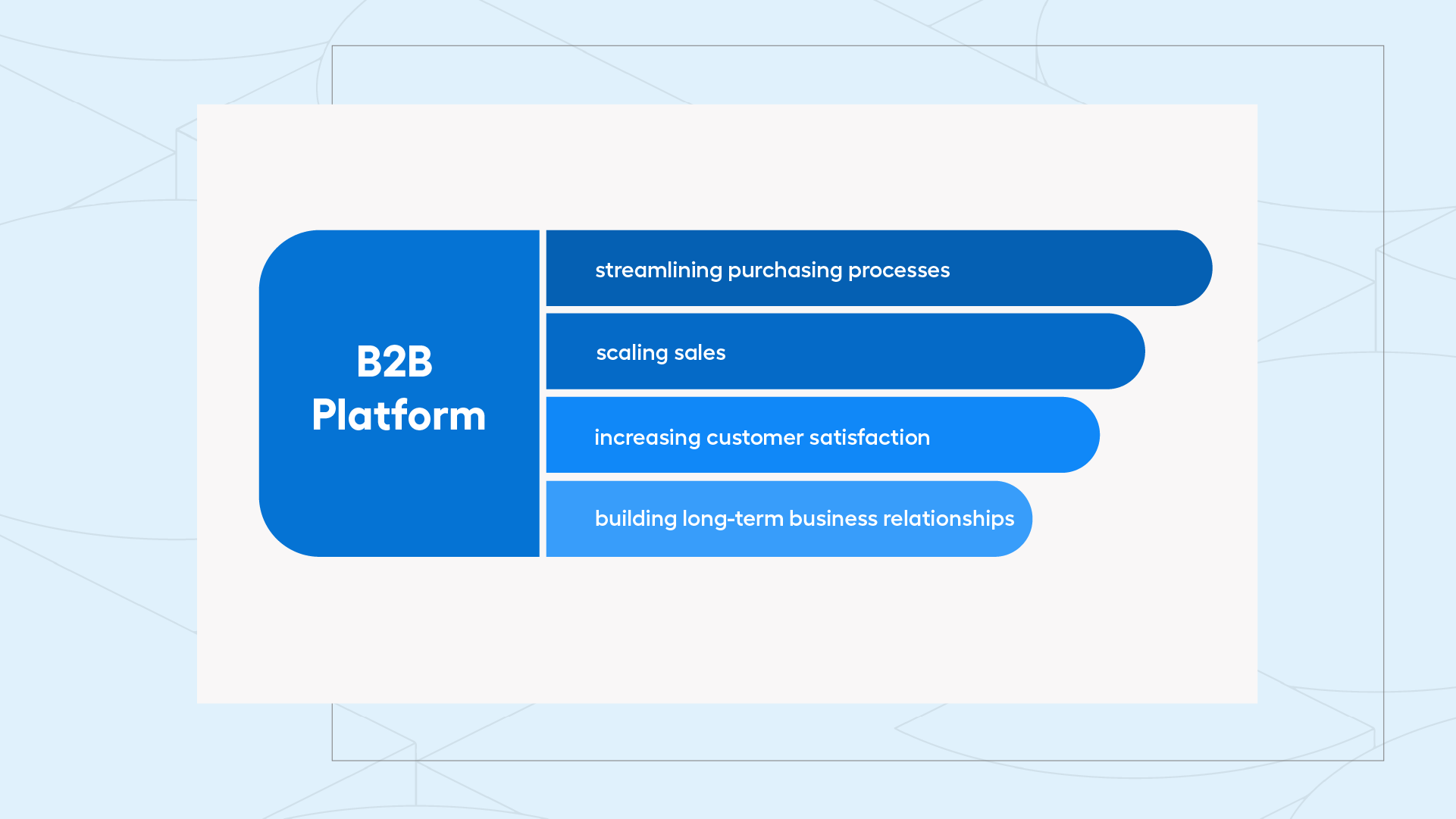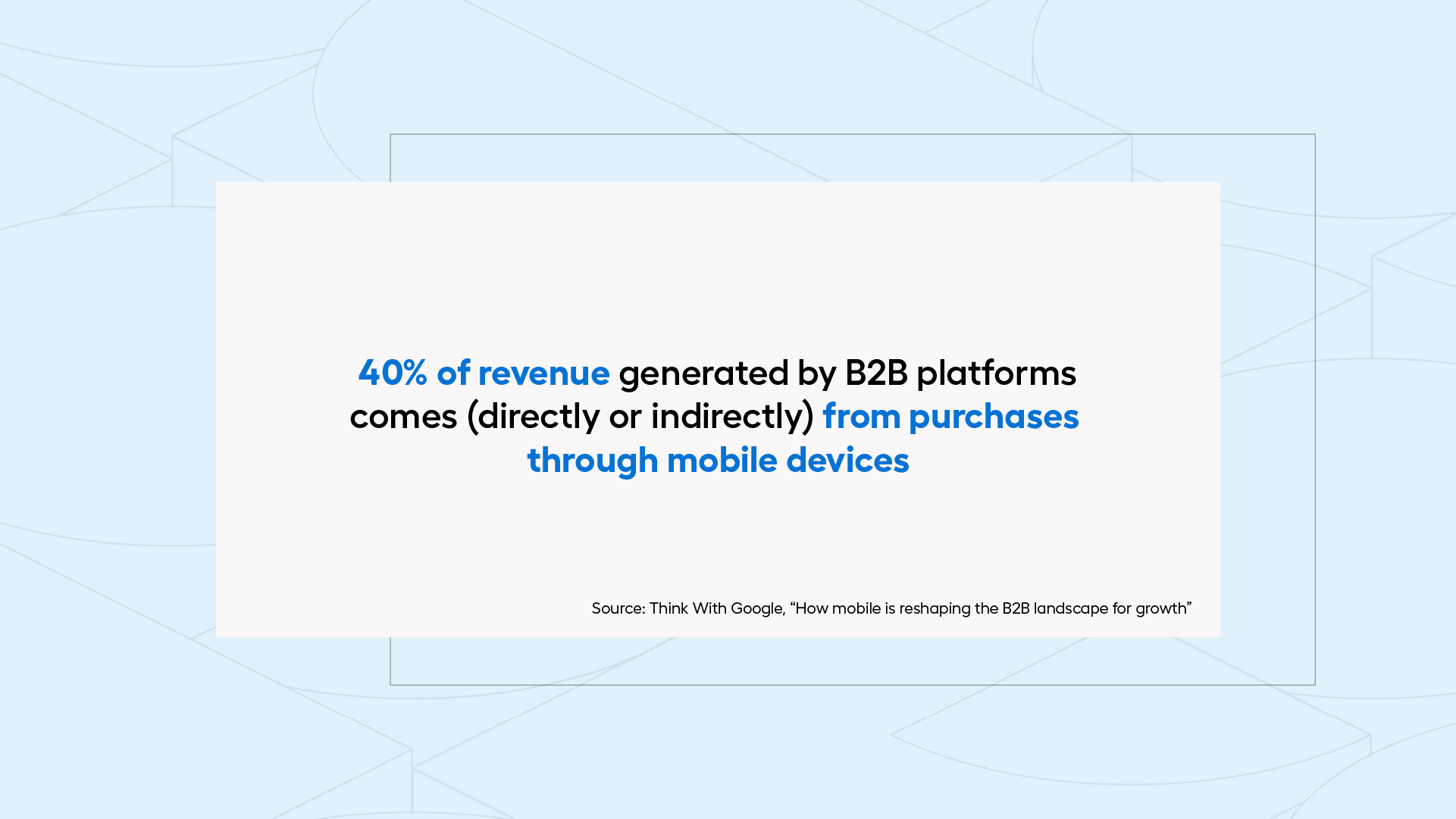Table of contents
- B2B Platform vs B2C - different User Experiences, same goal
- UX of B2B Platforms - what to focus on?
- Best practices for designing B2B platforms
- Save your contractors' time
- Help Make the Best Decision
- Make the platform accessible to all
- Don't Forget About Aesthetics
- Meet your contractors' expectations with perfect B2B platform design
- time needed to make a decision - in the B2B industry, the process of making a final purchasing decision can take several weeks, as it often requires approval from various decision-makers within the company.
- scale of purchases - B2B orders typically involve high value. Companies often make wholesale purchases or order larger batches of products, which can affect price negotiations and the delivery process.
- customer service - B2B customers can expect a more personalised approach to service. Each account may have a dedicated account manager who provides support at every stage of the purchasing process and addresses the individual needs of the customer.
- offer specifics - products and services offered in the B2B sector are usually more complex and specialized than those available in the consumer market. Therefore, the sales process in B2B may require more technical and specialised knowledge from the seller, as well as more frequent interaction with the customer to understand their needs and tailor the offer accordingly.
- intuitive navigation - B2B contractors often place complex orders that require going through many stages. Therefore, it is crucial for the platform's design to provide a smooth and intuitive transition through the entire process. Pay attention, for example, to whether the menu is easily accessible and organised.
- automatic form filling - considering that contractors are frequent visitors to the platform, make sure they don't have to enter the same information every time. Take care of this by implementing the option of automatically filling out forms.
- ability to replicate historical orders - providing a feature that allows for quickly replicating previous orders can be extremely useful for users who regularly make the same purchases.
- order placement based on CSV file - B2B orders often involve wholesale purchases and include hundreds, or even thousands, of products. The ability to upload a file with a list of all necessary items will significantly streamline this process.
- product comparison tools - providing the ability to compare different products allows contractors to thoroughly analyse available options and choose those most in line with the company's needs.
- comprehensive information - due to the specificity of B2B purchases, contractors usually expect more detailed information about the products offered. Therefore, equip the platform with additional sources of knowledge such as guides, user manuals, or informational materials to help them better understand the offer.
- product search - implementing an effective search tool in the platform allows contractors to quickly and easily find products of interest to them. This function should be intuitive and allow for filtering results according to various criteria, such as price, brand, or technical specifications.
- contact to account manager - providing contact information for the account manager in a prominent place allows for quick contact. This provides them with support and assistance at every stage of the purchasing process, increasing trust and loyalty to the platform.
- responsiveness- ensuring the responsiveness of the platform allows users to use it regardless of whether they are using a computer, smartphone or tablet. However, responsiveness alone will not always guarantee a comfortable User Experience on different screen sizes, so it is equally important to ensure that the platform includes so-called mobile-friendly solutions (e.g., different button placement or clear navigation menu). This ensures that the User Experience is consistent and optimal regardless of the device, which promotes convenience and increases the chances of conversion.
- accessibility - by ensuring compliance with accessibility principles (WCAG), you ensure that the platform is accessible to all users, regardless of their individual needs or limitations.
According to McKinsey's forecasts, over 30% of B2B transactions in 2024 will take place online (this value was 20% in 2023). The shift of business relationships to online channels is becoming not only an attractive feature but also a necessity. However, investing in a B2B platform is just the first step, which may (but not necessarily) bring you closer to success in eCommerce. B2B buyers expect the same quality they are accustomed to from consumer purchases, but tailored to their needs. Therefore, it is essential to provide them with appropriate shopping experiences. However, you don't have to look far to learn the best practices for designing B2B platforms. Just read this article!
B2B Platform vs B2C - different User Experiences, same goal
Regardless of the industry or customer group, online entrepreneurs aim for one fundamental goal - increasing sales and profits. However, the way to achieve this goal can vary significantly. These differences are evident when comparing B2C (business to customer) and B2B (business to business) platforms, especially concerning User Experience (UX) design. What exactly distinguishes each of these strategies?

First and foremost, in designing a B2B platform, it is important to take into account the fact that business buyers make purchasing decisions differently than consumers purchasing products for their own needs. As they fulfil orders for the company they work for, their decisions are more strategic, based on analysis and predetermined goals. In the B2C sector, on the other hand, emotions play a greater role - individual customers often follow impulses, trends, or are guided by personal preferences. On this basis, key differences between B2B and B2C customers include such elements as:
These differences directly translate into how User Experiences are designed on a business platform. Find out which UX elements are worth paying particular attention to.
UX of B2B Platforms - what to focus on?
For business clients making online purchases, it is crucial how quickly and efficiently they can perform their business tasks on a given platform. However, this does not mean that the design of the B2B platform should be limited only to providing functional solutions. Carefully designed UX can significantly impact the engagement of contractors, their satisfaction, and ultimately, business success in the form of long-lasting and strong relationships. So, how do you create a platform that is not only useful but also makes using it satisfying?

Best practices for designing B2B platforms
Good B2B platform UX puts the contractor at the center. Therefore, it is essential to understand the needs and specifics of your business customers, for whom your platform is ultimately a work tool. That's why it is crucial for the user interface to be intuitive and not cause frustration. To confirm this thesis, just imagine such a situation: during a busy day, your computer suddenly refuses to cooperate, preventing you from performing your duties. Undoubtedly, you will feel reluctance and stress, emotions that you wouldn't want the users of your platform to experience. Fortunately, good UX can help eliminate such feelings and, on the contrary, contribute to making daily tasks run smoothly and seamlessly. Learn the best practices for designing UX of B2B platforms that will help you achieve this goal.
Save your contractors' time
The specificity of B2B sales may require contractors to place orders several times a day. For this reason, they will undoubtedly appreciate it if you take care to minimise the time needed to complete transactions (e.g., by minimising the need to perform routine and repetitive tasks). To achieve this, it is worth focusing on the following elements:
Help Make the Best Decision
Making purchasing decisions in business can take a lot of time and analysis before placing the final order. You can streamline this process and help contractors make the best decisions by focusing on the following elements:

Make the platform accessible to all
According to data compiled by Think With Google, as much as 40% of revenue generated by B2B platforms comes (directly or indirectly) from purchases via mobile devices. This indicates that (once again, similarly to B2C reality) contractors are increasingly willing to use digital sales channels and expect the company to be available on multiple channels, following an omnichannel approach.
To ensure that the platform is accessible to all, it is worth focusing on:
Don't forget about aesthetics
Although the B2B platform is mainly associated with functionality, the role of aesthetics cannot be underestimated, as it is an essential element of the User Experience. When designing a platform, it is essential to focus primarily on its consistency with the company's image and character. Colours, fonts, and other visual elements, such as photos or graphics, should align with your brand's visual identity. It is also essential to arrange elements on the page correctly - they should be consistent and presented consistently to enable users to navigate easily between sections and subpages. Therefore, it is worth opting for simplicity and avoiding overcrowding with information. A carefully designed design can not only increase the credibility of your brand but also facilitate navigation and increase user engagement.
Meet your contractors' expectations with perfect B2B platform design
Is there a universal recipe for creating perfect shopping experiences in the B2B sphere? Its development is impossible due to the diversity of products and individual requirements of individual contractors. However, there are ways to streamline the e-commerce platform design process. By reading this article, you have learned tips, advice, and best practices in this field that will bring you one step closer to success in the online B2B reality. If you need advice tailored perfectly to your needs, contact us or see what we have prepared for you!



